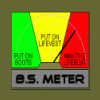Leaderboard
Popular Content
Showing content with the highest reputation on 12/08/2010 in Posts
-
Let me turn this around on you in the name of thinking this through? How does albuterol increase the amount of fluid in the lungs and what mechanism is responsible? "I was told so" is an invalid answer as I expect and hope my students verify the dogma that I spew at them. If I am lucky, they push hard to understand and perhaps get one over on me. What are the causes of diminished lung sounds and are any of these causes treated by albuterol administration? You will need to research the answers. Furthermore, when giving albuterol for "wheezing," is there an underlying pathology that we are looking to find that will cause said wheezing? After all this, we can discuss your partners decision making and the rationale he/she used to justify the decision to treat. My apologies if this comes off as a "non answer." I hope to read and learn from the fruit of your research. Take care, chbare.2 points
-
Ok, before I get crucified for being a 'heartless bastid', this needs to be said.... In my opinion, the 'take away lessons' here are: 1. ALWAYS be aware of your surroundings! Unfortunately, the officer in this case didn't have all the information available. This led to his 'tunnel vision', concentrating only on the victim on the ground. Since this was anhydrous ammonia, the victim was probably already deceased by the time the officer arrived on scene. Yes, we're trained to mitigate a whole host of 'bad situations' and the general public's opinion of what we do includes rushing blindly in to 'save the day'. As the video clearly shows, this course of action can have fatal results. While the officer attempted to 'save the victim', he was unaware when he rolled up that he'd only succeed in a 'body recovery'. 2. It's been said many times in many different ways that the rescuer is of no use to the victim if they have to be rescued themselves. As calm and collected as the officer appeared when he rolled up on scene, I'm surprized that he just ran into the vapor cloud without checking to see what it was, and how potentially dangerous this action would be. 3. In EMS, we're educated and trained to save lives, not sit idly by and watch people we're supposed to be helping die. Unfortunately, this video clearly shows that when you do not pay attention to your surroundings, and take the appropriate precautions; all we're going to end up doing is increasing the body count. 4. As Ugly pointed out (from the standpoint of someone who routinely works with hazardous substances), the firefighters did things as they were supposed to do. Bunker gear and SCBA were the appropriate safety gear for this situation. Since the airway was protected and the risk of exposed skin was minimized as much as possible, any exposed skin (neck, upper chest, ears, scalp,etc) could be decontaminated by hosing them down on scene with a full shower upon returning to the station. 5. Routinely, in EMS we are not equipped to rescue the victim. As much as this sucks 'the big one', we HAVE to wait on the sidelines until the appropriate personnel can get them out, or until the victim can come to us. Scene safety doesn't end just because we've walked off the scene. This could have been any number of substances that could have been carried back to the hospital, station,...home... There is a myriad of 'evil stuff' out there. We HAVE to pay attention and take the appropriate response actions, otherwise we're becoming part of the problem instead of part of the solution.1 point
-
Yes Dwayne there is. Not being ALS I might miss something but if I do I know folks will help out. Just by going off of the chemical itself, again cant view the video, and its known antagonists there are a few things one would concider. What are the immediate health effects of exposure to anhydrous ammonia? Symptoms include burning of the eyes, nose, and throat after breathing even small amounts. With higher doses, coughing or choking may occur. Exposure to high levels of anhydrous ammonia can cause death from a swollen throat or from chemical burns to the lungs. Eye exposure to concentrated gas or liquid can cause serious corneal burns or blindness. Skin exposure will result in chemical burns. Generally, the severity of symptoms depends on the degree of exposure. So as an ALS provider if we know exposer was high some sort of intubation should be concidered to protect the airway from closing due to swelling. As far as chemical burns to the lung lining this would lead me to believe some sort of pain meds to ease suffering. I dont know if CPAP would help but, follow me here, knwing in COPD patients it forces some of the mucus out of the lungs and allow them to use oxygen more efficiently with less effort I would lean twords that. We are dealing with damaged lungs and possible asperation issues so anything that would relieve those symptoms might be good. As for the eyes, again flush with copious amounts of water, pain meds maybe? Cover both eyes with sterile dressings. Skin burns would be treated as any other burn. Flush with water to stop the reaction, dress the wounds with burn dressings and gel. Pain may or may not be present I would gather depending on the severity of the burns and coverage of affected area so again pain meds. From all research i can find the effects of this chmical have to be treated by the body alone, medical intervention is to ease the symptoms that develope and not treatment of the effects. So in an ALS capacity you would look to patent the airway, CPAP if indicated, and pain managment. The rest could be handled in a BLS capacity (burn dressing, eye dressings, O2 therapy) Again once I see the video I will get a better handle on what the actual situation was. One thing that has bothered me though... anhydrus ammonia stinks to holy hell at as little as 50ppm and causes eye irritation and coughing at as little as 134ppm so I want to know how the trooper even began approaching the "smoke" without knowing something was a miss. BTW leathal doses in the way it has been described is around 5,000 ppm so imagine the smell and irritation factor at that scene. Table 1. Exposure Levels and The Human Body. -------------------------------------------------------------------------------- Exposure (ppm) Effect on the Body Permissible Exposure -------------------------------------------------------------------------------- 50 ppm Detectable by most people No injury from prolonged, or repeated exposure -------------------------------------------------------------------------------- 134 ppm Irritation of nose and throat Eight hours maximum exposure -------------------------------------------------------------------------------- 700 ppm Coughing, severe eye irritation, may lead to loss of sight One hour maximum exposure -------------------------------------------------------------------------------- 1,700 ppm Serious lung damage, death unless treated No exposure permissible -------------------------------------------------------------------------------- 2,000 ppm Skin blisters and burns within seconds No exposure permissible -------------------------------------------------------------------------------- 5,000 ppm Suffocation within minutes No exposure permissible --------------------------------------------------------------------------------1 point
-
Okay, I am going to take a crack at this question. Albuterol is a brochodialater and has two effects. One is the the B1 effect which increases heart rate and blood pressure and the B2 effects will open up the bronchiols which will increase the pulmonary edema. Wheezing in a CHF patient are a sign of the lungs' protective mechanisms, since bronchioles constrict in an attempt to keep additional fluid from entering the lungs. So by giving the pt. ventolin it will increase the cardiac output and open up the bronchiols allow more fluid to pool in the bases of the lungs. diminished lung sounds are caused by pulmonary edema which is caused by the heart's reduced stroke volume. The heart's reduced stroke volume causes an overload of fluid in the body's other tissues. This presents as edema, which can be pulmonary, peripheral, sacral, or ascitic. From my understanding is that when treating someone with CHF is to apply high flow O2 @ 15lpm don't have them walk to the stretcher as this can increase the laboured breathing so use the slider board and slide them over to the main cot. Have them sitting up with their legs raised as this will promote venous pooling, thus decreasing preload. Great discussion! Brian1 point
-
That is hard to watch....from my home state. I will share this with my department tomorrow on shift so we can all learn from it. Scene safety, indeed. Be safe out there folks.1 point
-
If y'all had paid attention to the lead-in on the video, you'll notice that Fire and EMS were aprised of the situation being hazmat and that it was an anehydrous ammonia spill. This information was not given to the police. Being that it was in a rural area, he should have suspected that it MIGHT include farm machinery, or chemicals. Upon arrival, he should have seen the placard on the oveturned trailer and figured that it was a hazmat scene. Upon realizing that he may have a hazmat situation, he should have backed off the scene and used his binoculars to get the numbers off the placard. If he didn't have a DOT hazmat book in his vehicle (I think they're required by federal law for first responders, police, fire EMS), he could have had the information relayed to the dispatcher who would have been able to call Chemtrec (1-800-CHEMTREC) and had the numbers translated to english.1 point
-
Tell them he died of a ruptured AAA. Case closed. If you missed something emergent that was going to cause death, the ER would have picked it up and treated it. Armchair quarterbacking without all the facts including cause of death is so unprofessional. As students they need to learn that lesson.1 point
-
Hi all, I didn't know where to put this. So here goes. I am looking for a particular Paramedic/ EMS/ EMT T shirt. The writing states something similar to; We don't deserve to be called Heroes but then we don't deserve to be vomited on either. I have searched but I still cannot find and would be very grateful to anyone who would be able to help. Thanks for your help.1 point
-
This is why the ratings system is SO STUPID!! The guy asked a question. Just because you don't like the question doesn't mean you should hit him with a negative point!! It's supposed to be QUALITY OF POST... everything was spelled correctly, and this is a grand teachable moment if the idiots who knee-jerk would give us a little space and not goon it up... Please, anyone reading this, take a moment to give the kid some positive points to bring him back up to neutral rating... he's only got one post in here. Let's not run him off before he even gets started... Wendy CO EMT-B1 point





